Ryan Hall's Blog, page 174
April 14, 2017
Galen Rupp Feeling Healthy Despite Recent Foot Injury Ahead Of Boston

Ahead of his Boston Marathon debut, Galen Rupp, one of the top American contenders at this year’s race, assures us that he’ll be in prime condition on race day (despite a recent foot injury at his tune-up race in Prague). Although this will be Rupp’s first Boston experience, he’s had success in his last two and only marathons—claiming victory at the U.S. Olympic Trials Marathon and then taking home the bronze medal at the Rio Olympic Marathon last year. At this year’s press conference, Rupp reflects on what it will mean if he wins, especially 35 years after his coach Alberto Salazar famously won the race.
RELATED: Galen Rupp Makes His Boston Marathon Debut Amid A Storm
The post Galen Rupp Feeling Healthy Despite Recent Foot Injury Ahead Of Boston appeared first on Competitor.com.
Wise Words From Meb Ahead Of The Boston Marathon
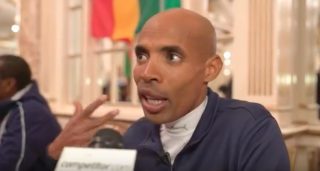
On Monday Meb Keflezighi will be running his very last Boston Marathon as a competitive athlete. At this year’s press conference, the Olympic medalist and Boston champion shared with us what Boston over the years has meant to him, including his historic win in 2014, and how he’ll still continue to participate in the sport he loves after he retires this fall.
RELATED: Meb’s Thoughts On His Last Boston Marathon
The post Wise Words From Meb Ahead Of The Boston Marathon appeared first on Competitor.com.
Emmanuel Mutai To Run Historic Eighth World Marathon Major In Boston
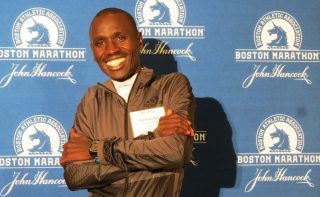
Emmanuel Mutai of Kenya in advance of the 2017 Boston Marathon. Photo: Jane Monti
(c) 2017 Race Results Weekly, all rights reserved
Regardless of his finish time or place in Monday’s Boston Marathon, Kenya’s Emmanuel Mutai is poised to make history. Should the 32-year-old Kenyan finish the race, he will become the first athlete to complete all eight marathons which comprise of the Abbott World Marathon Majors: Berlin, Boston, Chicago, London, New York, Olympic Games, Tokyo, and the World Championships.
Mutai, the fastest man in the field with a career best time of 2:03:13, has compiled one of the best records in the history of marathon running. According to statistics compiled by the Association of Road Racing Statisticians (ARRS), Mutai has completed 20 marathons since taking up the distance in 2007 when he made his debut in Rotterdam in a modest 2:13:05. He has recorded nine podium finishes (including two victories) and only finished outside of the top-10 three times. He is the fourth-fastest man of all time on record-quality courses, and he’s run sub-2:07 nine times. The ARRS says his life-to-date prize money is $1,485,462, a figure which doesn’t include appearance fees or personal bonuses paid by race organizers, and any earnings from his longtime sponsor, adidas.
Mutai says that consistent training under his longtime coach Patrick Sang has been the key to both his success and his longevity.
“For me, I didn’t change the training,” Mutai said in an interview with Race Results Weekly here today. “Maybe I only focus on training, good preparation and also doing a lot of exercises. I’m getting massage all the time, which prevents injuries.” He added: “Coach has done a great achievement, too. I follow what he has to say so I can achieve my goals.”
Mutai’s first Major was the London Marathon in 2008, where he finished fourth in a personal best of 2:06:16. Little did he know that London would become the race which would define his career. He would answer the starter’s pistol in Blackheath seven more times, making the podium three times and winning in 2011 in a then course record of 2:04:40.
He nearly won London again in 2013. He was leading the race by 28 seconds at the 40K mark, but was done-in by crippling pain in his hip and thigh. He finished second in 2:06:33 to Ethiopia’s Tsegaye Kebede.
“I thought I might win today, but could not pick up the pace in the late stages,” Mutai told Race Results Weekly at the time.
In London he finished 4th, 4th, 2nd, 1st, 6th, 2nd, 7th and 11th. He was also 17th at the 2012 London Olympic Marathon, the lowest finish place of his marathon career.
“For me, I can say London was my favorite,” Mutai said after pausing to think. “But also Chicago, New York, Berlin because Berlin I ran my personal best. Also in New York, we ran a course record there. London I set the course record. Even Chicago, I ran a personal best over there. All the majors I’ve run are my favorites.”
Mutai ran the BMW Berlin Marathon three years in a row, from 2014 through 2016. In 2014, he came in second to Dennis Kimetto who set the still-standing world record of 2:02:57. Mutai ran 2:03:13, also under Wilson Kipsang’s previous record of 2:03:23. He smiles now when asked how if felt to break the world record, but not become the world record-holder.
“The guy who was in front of me ran a world record,” Mutai said, smiling. “But for me, I set my personal best at that time which was quite an improvement for me.”
Also in Berlin, Mutai won the silver medal at the IAAF World Championships in 2009 on a different course.
After coming in seventh in Tokyo in 2016, Mutai needed only to run Boston to run all eight Majors. It’s an incredible feat to get invitations for all six of the commercial races, plus get selected for the IAAF World Championships and the Olympic Games by Athletics Kenya. Wesley Korir, and Olympian who won the Boston Marathon in 2012, marvels at Mutai’s achievement.
“I think it means a lot,” Mutai told Race Results Weekly. “For him to be able to stay healthy, and to be able to have the time to run all six and to be invited to all six. I think it’s an honor for him. It’s a privilege that many people want to do, but they don’t get to do it.”
In Boston, Mutai said he was looking to see how difficult the course is. He said New York, where he finished second twice, was the hardest of the Majors he’s run. He described his goal for Monday plainly.
“My goal is just going for the win,” Mutai said matter-of-factly. “Time doesn’t matter in Boston. Winning is the most important.”
NOTE: Assuming he finishes on Monday, Mutai will officially become an Abbott World Marathon Majors Six Star finisher, an honor bestowed on any runner who finishes all six of the commercial events in the series. After receiving his own Six Star medal, he’ll be presenting those medals to other Six Star finishers at a special tent just past the finish line.
RELATED: The Top 23 Elite Athletes To Watch In The 2017 Boston Marathon
The post Emmanuel Mutai To Run Historic Eighth World Marathon Major In Boston appeared first on Competitor.com.
April 13, 2017
This Paralyzed Athlete Is Out To Prove He Can Compete Again
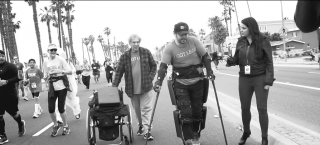
In December of 2005, Adam Gorlitsky’s life changed forever. As he was driving home after spending the evening with family, the then 19-year-old fell asleep at the wheel for a few seconds. That short time was just long enough to crash his vehicle. His injuries were severe, causing paralyzation from below his belly button.
Gorlitsky’s life changed again in 2015—this time for the better. He was given a chance to use a ReWalk Robotic Exoskeleton, a new technology that allowed him to stand and walk. Once an accomplished athlete, he found a new challenge: walking one million steps within races as a “re-enabled” athlete. His ambitious goal led to the creation of the I Got Legs Foundation.
Gorlistky’s first race was the 2016 Cooper River Bridge Run in Mt. Pleasant, S.C. He completed the 6.2-mile race in over seven hours. This year he beat that time, finishing in 6 hours and 33 seconds.
Gorlistky wants fellow re-enabled athletes to join him in road races to raise awareness about the exoskeleton and other walking device technology available to the disabled community. He teamed up with director Warren Adcock and producer Trevor Potts to create a documentary about his journey. I Got Legs: Or How I Learned to Stop Worrying and Love the Exoskeleton follows the launch of the I Got Legs Foundation and explores Gorlistky’s fight for the right to walk. The filmmakers have launched a Kickstarter, with hopes of raising enough money to complete the film by Spring 2018.
To find out more about Gorlistky’s story, watch the video below.
The post This Paralyzed Athlete Is Out To Prove He Can Compete Again appeared first on Competitor.com.
April 12, 2017
How To Watch The 2017 Boston Marathon
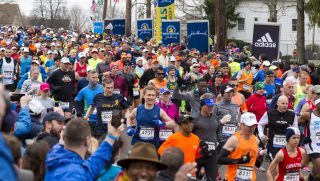
The 121st running of the Boston Marathon will take place Monday, April 17. If you want to watch, here is what you need to know.
Schedule of Events
The Mobility Impaired runners start the marathon at 8:50 a.m. The wheelchair race begins at 9:17 a.m., followed by the Elite Women at 9:32 a.m. Elite Men and Wave One starts at 10:00 a.m.
National Television
NBC Sports Network will be broadcasting live race coverage from 8:30 a.m. until 1:00 p.m. EST. If you want more Boston coverage, NBC-owned Universal HD will host a preview show on Sunday, April 16 at 8:00 p.m. EST and a replay of the marathon at 8:00 p.m. EST on Monday night.
Online
If planning to view the race through a web browser, there are two choices. The B.A.A. will carry a live feed of the race through their website at watchlive.baa.org. The marathon will also be available to watch at nbcsports.com/live-extra.
If watching through a smartphone or tablet, the race will be live streamed on the NBC Sports Live Extra app. The app is free but you will need to provide log-in credentials from your cable provider.
Local Television
For those in the Boston area, CBS affiliate WBZ-TV will have exclusive local coverage from 9:00 a.m. until 5:00 p.m. EST. CBSBoston.com will also carry a live stream, a course guide, and a finish-line camera. This year Shalane Flanagan will join the broadcast with returning hosts Lisa Hughes, Steve Burton, and Toni Reavis.
International Viewers
FloTrack Live will live stream the marathon to viewers in the United Kingdom, Ireland, the Netherlands, Italy, Spain, Australia, and New Zealand. Other international broadcasters can be found here.
RELATED: The Expert’s On-The-Course Guide To Spectating The Boston Marathon
The post How To Watch The 2017 Boston Marathon appeared first on Competitor.com.
These New Running Shoes Are Created From Light And Oxygen
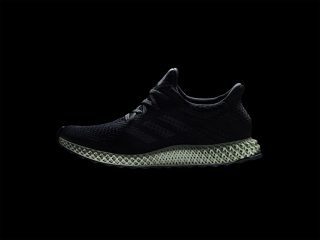
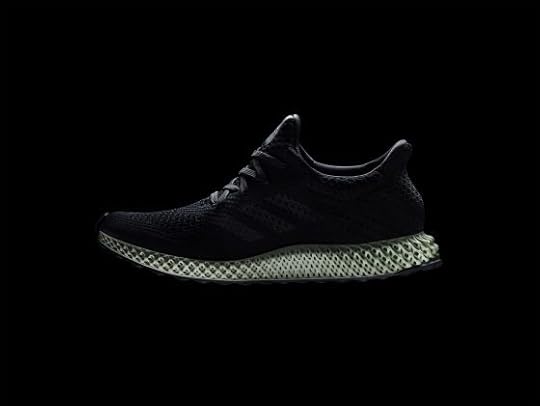
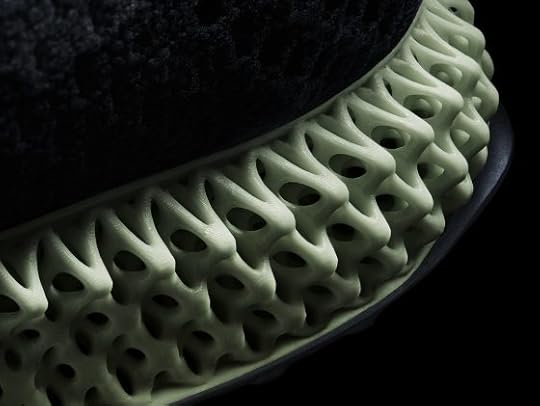

[image error]

Photos: Courtesy of adidas
Footwear created from light and oxygen sounds like science fiction. But that is exactly how adidas crafted the midsole of their brand new shoe.
Futurecraft 4D are the first high performance running footwear created through a process called Digital Light Synthesis. Adidas partnered with CARBON, a technology company that develops products through hardware, software and molecular science, to pioneer an entirely new manufacturing technique. According to a statement from adidas, the process uses “digital light projection, oxygen-permeable optics and programmable liquid resin” to form the midsole of the Futurecraft 4D shoe.
The process helps adidas towards their goal of providing “bespoke footwear tailored to individual physiological data and customer desires.”
“Despite the influence of technology to improve almost every other aspect of our lives, for eons the manufacturing process has followed the same four steps that make up the product development cycle—design, prototype, tool, produce, said Dr. Joseph DeSimone, Carbon Co-Founder and CEO. “Carbon has changed that; we’ve broken the cycle and are making it possible to go directly from design to production.”
RELATED: Adidas Makes Running Shoes From Recycled Ocean Plastic
Adidas took 17 years worth of data from real runners to create Futurecraft 4D. The shoe aims to address movement, cushioning, stability and comfort with one single component. The goal is to make “the ultimate running shoe for all.”
Futurecraft 4D will be released this month, but on an extremely limited scale; only 300 pairs will be available to friends and family of the brand. Adidas hopes to deliver 5,000 pairs to retail for Fall/Winter 2017 and 100,000 pairs by the end of 2018. No pricing information has been shared.
RELATED: Adidas Debuting Exclusive $333 3D Printed Running Shoes
The post These New Running Shoes Are Created From Light And Oxygen appeared first on Competitor.com.
April 11, 2017
Coach Culpepper: 3 Most Common Mistakes Made By Masters Athletes

As we age, we become set in our ways when we train and race—and tend to focus on those facets that come easiest. When we do so, we unknowingly slide into patterns of neglect, which lead to less than optimal performances. Training and racing in our post-prime years is not always glamorous but it can still be just as satisfying. The keys are maximizing the effort you put in, and knowing that you must adjust your training.
Mistake 1: Overemphasizing Aerobic Work
One of the wonderful benefits of age is that we become aerobically stronger. This is one of things I appreciate most about running. Everyone, no matter their ability level, has the potential to improve their aerobic conditioning and thus improve their performance. I am certain that some of you could share stories of the miraculous improvement you have made from when you first started running until now. However, there is a threshold for those benefits, and there comes a point where you are shining up the same old engine and not adding any new horsepower. It is staggering how easily a master’s athlete can maintain their aerobic strength with much less emphasis on it compared to when they were younger. Longer tempo runs, steady long runs and marathon pace efforts are all good but we should minimize them as we age. Don’t slip into the trap of running the same type of high-level aerobic efforts over and over and losing out on the opportunity to actually improve your fitness through other means.
RELATED: Supplementing Running With Strength Training
Mistake 2: Fear Of Speed
Some masters athletes fear speed—or rather, they fear injury, feeling awful or sore, or just being out of their element. Faster sessions can feel awkward and hard, so many masters runners just focus on marathon paced workouts. As we age and lose the snap and responsiveness in our muscles, we need to focus more on the muscular system. By speed, I mean quicker pacing than half marathon pace, lasting no longer than eight minutes at a time. The limiter as we age is not our lungs but our legs; your muscles deteriorate quicker than your oxygen-carrying enzymes. Without the inclusion of faster work you will find that you get really good at running one pace. Speedwork adds muscular strength and this positively impacts racing at any distance even the marathon. The key is to be smart, integrate gradually and allow your body time to adapt.
Mistake 3: Neglecting All The Other Workouts
Along with speed work, other cross training can have very positive impacts on training and racing as we age. Masters athletes must adopt a full-body approach to stay injury free and constructive. Pilates, yoga, weight training, core work, biking, spin class or swimming are good examples. And just like with faster workouts, a little goes a long way: working on these different muscle groups even just a few days a week will prove effective. Lastly, don’t forget about stretching! It’s the easiest and most effective way to stay injury free, but is often the most neglected.
RELATED: Wise Tips From Masters Runners On Staying Fit and Injury-Free
***
About the Author
Two-time U.S. Olympian Alan Culpepper won national titles from the 5K to the marathon. His first book, Run Like a Champion, is available at VeloPress.com.
The post Coach Culpepper: 3 Most Common Mistakes Made By Masters Athletes appeared first on Competitor.com.
Here’s The Real Problem With The Athleisure Trend

Illustration: Michelle Schrantz
When I first started running, my sports bras resembled a Kevlar vest—lots of straps, lots of Velcro, thick enough to stop a bullet. Those sports bras weren’t pretty, but they got the job done. Besides, no one saw them. Like most runners, I usually wear one of the 500 free race shirts I’ve accumulated over the years.
If you had told me back then that running clothes would become a fashion trend, I would have laughed hard enough to bust a few Velcro connections.
But here we are, watching models strut down the catwalk in sweat-wicking material. We don’t call them “running clothes” anymore. Now it’s “athleisure,” because the Giseles and Behatis of the world do not actually run marathons—they just look like they do.
And yes, I was annoyed when my favorite running apparel company began adding padding to the busts of their bras, but I didn’t complain. I just smiled, squeezed the sweat out of my boob stuffing and went back to my Yasso 800s.
The same thing happened with running shorts. Once upon a time, my butt was covered during hill repeats. Over the years, the inseams of women’s running shorts have gotten shorter and the leg openings tighter. Even leggings, the last bastion of coverage for women who run, have become see-through and chafe-tastic.
It’s become cool to dress like a runner, but we can’t actually run in these clothes anymore. Sports bras, in particular, have become the lame duck of the athleisure trend. Actual support has been eschewed for a dizzying array of delicate straps woven into the most intricate of designs. They’re high fashion and oh-so-adorable, until you actually try to run in them.
RELATED: Why Women’s Apparel Companies Are On The Rise
While at a trade show recently, I was talking with a manufacturer of such high-fashion sports bras. Designed to be worn alone or with tank tops, the new bras had straps and bright fabrics that were stunning.
“Do me a favor,” I asked one of the models, who was sporting a spiderweb of fine threads over her shoulders. “Jog to the end of the walkway, would you?”
I still cringe when I think of the model’s pained grimace as she bounced—quite literally— those few yards. I’m supposed to be able to run a marathon in that thing? For the average woman who runs, sports bras are not for show. They’re the workhorse of the wardrobe, second only to running shoes in importance. I don’t need lace and cleavage; I need a good old-fashioned over-the-shoulder boulder holder, so that the only thing I have to ice after a marathon is my beer.
Manufacturers want so badly to capitalize on the athleisure trend that they’ve stopped making athletic wear. Fancy straps and sheer panels are a nice idea, but they lose their wow factor when covered by a free tech tee from the 2011 Berkeley Hills 5K and Vegan Potluck.
If Gisele and Behati ever got off the catwalk and trained for marathon, I’m sure they’d agree.
RELATED: Shoe Brands Taking On Athleisure Style
The post Here’s The Real Problem With The Athleisure Trend appeared first on Competitor.com.
This Runner Went From Beginner To Boston Qualifier In 10 Weeks
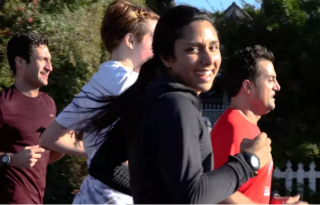
Photo: Buzzfeed
Michelle Khare is not a rookie when it comes to extreme sports. The Buzzfeed video producer and social media star has tried riding motocross, training like a Cirque Du Soleil performer, and performing extreme pogo, just to name a few. However, her biggest challenge began when coworkers asked her to run the Los Angeles Marathon on just 10 weeks of training.
Khare, who had never run over three miles, teamed up with running coach and personal trainer Erik Steffens. She documented every aspect of her training cycle—the workouts, the gear, the tune-up races, and every emotion. In the process, Khare found that the greatest motivation was running for herself. And she even qualified for the 2018 Boston Marathon with a finishing time of 3:30:09.
So did Khare go from running rookie to running fanatic? Her extremely relatable video (with almost 2 million views already) will remind runners of every feeling that occurs while training for a goal race. Warning—you may have tears in your eyes at the end. And you may be tempted to sign up for a marathon.
RELATED: 5 New Faces Making Their Debut In Boston
The post This Runner Went From Beginner To Boston Qualifier In 10 Weeks appeared first on Competitor.com.
Tech Buzz: New Wearable Tech From Garmin, Fitbit And Polar
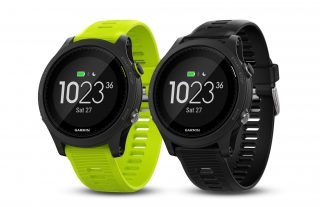

Garmin Forerunner 935, $500+
Garmin recently announced two new products focused on serious runners and multi-sport athletes: the Forerunner 935 GPS and heart rate (HR) watch, available in limited quantities in April, and the Run Dynamics Pod, available now.
The GPS Forerunner 935 includes all of the interface, training and hardware features found in the Garmin Fenix 5, 5S and 5X, except for the detailed on-watch maps and turn-by-turn directions of the 5X. The Forerunner 935 holds all of these features in a very light 49-gram watch. Its light weight is achieved by swapping the stainless steel bezel of the Fenix 5 series for a fiber reinforced polymer one, reducing weight by almost 40 grams. The difference in comfort is noticeable, but as an everyday lifestyle timepiece, the look says training watch when compared to the Fenix 5’s rugged elegance. It is also 12 grams lighter than the older style triathlon focused 920 XT ($450).
The 935 matches the 24-hour GPS/HR tracking battery life of the heavier Fenix 5. It includes a barometric altimeter, which the only 9 grams lighter 735 XT ($450) does not have. This enables a multitude of vertical focused features, including course elevation profiles if you have preloaded a route to follow. It has a vast array of easily configurable data fields—we counted over 200 options. Plus, Connect IQ downloadable apps will leave the data focused runner with everything they could want.
Smartwatch features include phone notifications, sleep and activity tracking, and music controls. It has easily customizable watch faces, identical to those on the Fenix 5, which can include data snapshots like battery life, elevation, date, and more.
We have been fortunate to test the 935 side-by-side with the Fenix 5X. On small wrists, the 935 is noticeably more comfortable and lighter. Heart rate sensors in the wrist can cause the “pendular effect,” a phenomenon where the watch weight and the shape as it fits on wrists, combined with the layout of the sensors, can cause inaccurate spikes for some runners. The weight of the watch on a smaller wrist can confuse the sensing of the motion of your arms and cadence with the heart rate sensing. From a HR sensing reliability standpoint, the 935 has had no high HR spikes in our testing, unlike most other watches, including the Fenix 5X.
We did, however, notice a discrepancy in the “distance to finish” feature on two navigation screens when using a preloaded course. When runners venture “off course,” then back “on course” on the preloaded course, the distance is not always accurate. A fix has been identified and will be in an update soon.
GPS accuracy is excellent. The screen, which is the same resolution as the highest end Fenix 5X, is visible in all light conditions.
The 935 is an outstanding choice for triathletes, ultra runners, and any serious runner seeking a lightweight, full-featured training system.
RELATED: These Are The Best Watches For Every Runner’s Budget

Run Dynamics Pod, $70
The new Run Dynamics Pod is a welcome alternative to the Run Dynamics Heart Rate strap. It makes total sense, as most Garmin watches now include the excellent Elevate wrist heart rate sensing. Few runners need those uncomfortable chest straps anymore.
The Run Dynamics Pod is tiny and securely clips to your shorts in the middle of your back. It seamlessly connects to the Fenix 5 series watches, 935, and 735 XT, weighs less than 0.5 ounces and has up to a year of battery life (replaceable). If anything, it is so small there is a worry it could get lost. However, the watch does remind you to remove it after every run. It would be great to see a small loop developed to connect the pod to a keeper strap or a key ring to help prevent losing it.
The Pod streams live form data to the watch including cadence, left/right ground contact time, balance, stride length, vertical oscillation or bounce while running, and vertical ratio (oscillation compared to stride length). It is a great way focus more attention on the relationship between ground contact time, stride length and cadence.

Fitbit Alta HR, $150
The new Alta HR is the slimmest screened activity and heart rate tracker we have tested to date. It truly disappears on any wrist and is available in “basic black and stainless” as well as several fashionable colors. The real story here, though, is not an unobtrusive slim fit, or that it is another fine activity and HR tracker. Fitbit has added an excellent new automatic sleep tracking and quality analysis feature.
The recovery provided during sleep is essential to athletic performance. Sleep characteristics are displayed every morning in the app. Going deeper than sleep time, the app clearly shows your long-term trends. Fitbit breaks down the time spent in each sleep cycle: Awake, REM, Light, and Deep. How do they get such a sophisticated analysis? Fitbit uses a combination of the Alta HR’s heart rate sensing, including heart rate variability, motion detection, and very sophisticated algorithms, all extensively tested in sleep labs.

We particularly liked comparing our results, and competing against the benchmark set by other users our age. Viewing our 30-day averages for each sleep stage gave a complete picture of rest. The app will even suggest a sleep schedule with reminders, based on your sleep trends, wake-up times and goals. Battery life is a very commendable four days.
RELATED: Tech Buzz—First Looks at New Suunto, Strava and Decibullz Releases

Polar M430, $229
On April 6 Polar announced the M430, a GPS and wrist-sensing HR watch, shipping in May. This watch is a worthy successor to the popular M400, which did not have wrist heart rate sensing capability. It is a great value, coming in at the same price as the M400. The watch weighs in at a very light 51 grams. However, it has a more rugged-looking casing than customary at the price point. The watch will be available in dark gray, orange and white.
Battery life with GPS and HR is eight hours, with up to 30 hours and one minute GPS sampling, and 20 preloaded sports modes. Users will have full access to Polar’s excellent Polar Flow platform. This includes a cumulating indication of Training Load, how workouts translate into expected race times, Running Index which approximates VO2 max, and training plans which will adapt based on your actual performances.
In an interview with Tom Fowler, CEO of Polar USA, we learned that the M430 will have a 6 LED heart rate sensing array, similar to the M600, and a more moisture resistant charging port. Polar is a pioneer in fitness heart rate sensing with experience going back to the 1980’s. Particular care was given to the sensor, watch case design and algorithms to reduce the “pendular effect” that we mentioned above.
RELATED: 2017 Running Gear Guide—Tech
The post Tech Buzz: New Wearable Tech From Garmin, Fitbit And Polar appeared first on Competitor.com.
Ryan Hall's Blog
- Ryan Hall's profile
- 21 followers



